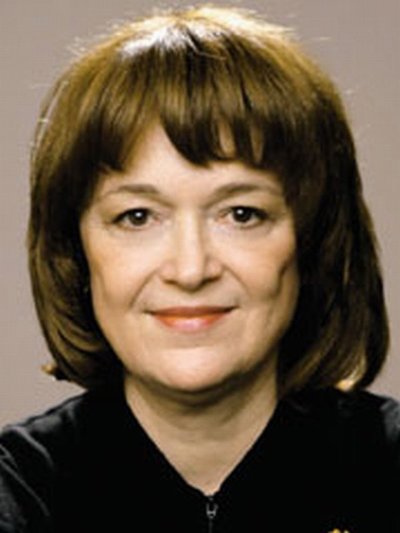May 1, 2008
Linda Buck elected to American Academy of Arts and Sciences
By Kristen Woodward
Fred Hutchinson Cancer Research Center
Nobel laureate Linda Buck, Ph.D., member of the Basic Sciences Division at Fred Hutchinson Cancer Research Center, has been elected to membership in the American Academy of Arts & Sciences (AAAS), one of the nation’s oldest and most prestigious honorary societies and independent policy-research centers. She is also a Howard Hughes Medical Institute investigator and a UW affiliate professor in the Department of Physiology and Biophysics.
Buck is among 190 new fellows and 22 foreign honorary members to join the AAAS 2008 class of fellows. Drawn from the sciences, the arts and humanities, public affairs and the nonprofit sector, AAAS fellows are leaders in their fields. This year’s class includes Nobel laureates, recipients of Pulitzer and Pritzker prizes, Academy and Grammy awards and Kennedy Center honors.
She was a senior postdoctoral researcher in Axel’s laboratory when she disclosed the nature of the olfactory receptors, and they co-published this work in 1991. Their work is the first to define one of our sensory systems in the most detailed manner possible by defining the genes and proteins that control this remarkably complex response. This was a landmark achievement in the study of the nervous system.
The basic principles for recognizing and remembering about 10,000 different odors have long been a mystery. In a series of pioneering studies, Buck clarified how our olfactory system works. She discovered a large gene family, made up of some 1,000 different genes that give rise to an equivalent number of olfactory-receptor types. These receptors are located on the olfactory receptor cells, which occupy a small area in the upper part of the lining of the nose and detect the inhaled odorant molecules.
Buck has also discovered and characterized families of receptors for pheromones and tastes, providing insights into the mechanisms underlying pheromone effects and taste perception.
Buck is the recipient of many national and international scientific awards. In 2003 she received the Gairdner Award, the Perl-UNC Neuroscience Prize and was elected a member of the National Academy of Sciences. She’s also the recipient of the Unilever Science Award, the LVMH Moet Hennessy Louis Vuitton Science for Art Prize, the R.H. Wright Award in Olfactory Research and the Lewis S. Rosenstiel Award for Distinguished Work in Basic Medical Research.
Other AAAS fellows at the Hutchinson Center are Lee Hartwell, Ph.D., president and director of the Center who in 2001 received the Nobel Prize in physiology or medicine for his work in yeast genetics; Mark T. Groudine, M.D., Ph.D., deputy director of the Hutchinson Center and former director of its Basic Sciences Division; Robert Eisenman, Ph.D., a leader in the field of oncogenes, aberrantly regulated genes that cause cancer; and the late Harold M. Weintraub, Ph.D., an international leader in the field of molecular biology.
Founded in 1780 by John Adams, James Bowdoin, John Hancock and other scholar-patriots, the AAAS elects the finest minds and most influential leaders from each generation, including George Washington, Ben Franklin, Daniel Webster, Ralph Waldo Emerson, Albert Einstein and Winston Churchill. The current membership includes more than 200 Nobel laureates and more than 60 Pulitzer Prize winners.
For a complete listing of the 2008 AAAS fellows, visit http://www.amacad.org/news/new2008.aspx.

